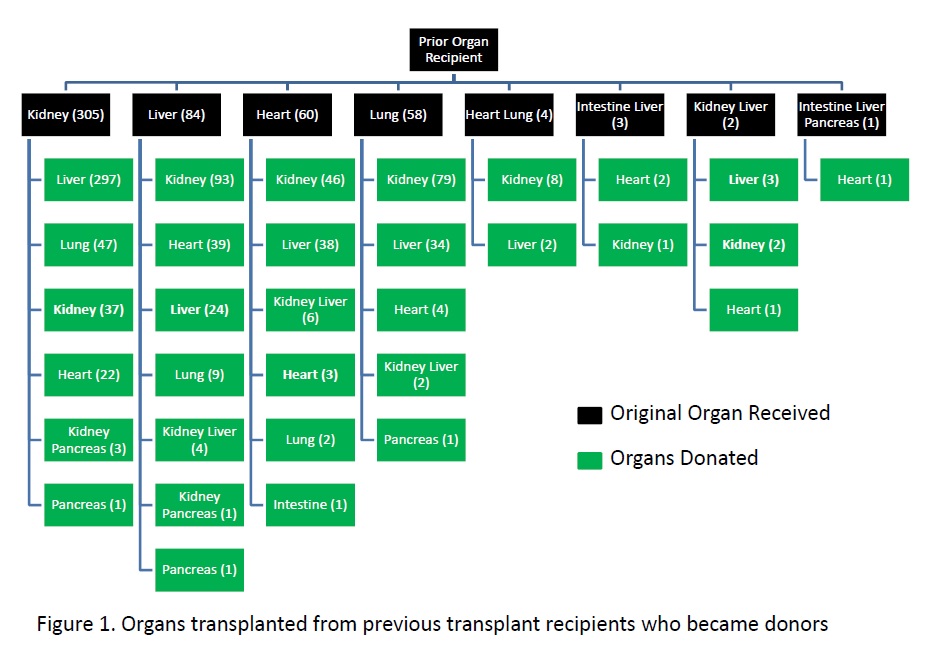Outcomes of Organs Transplants When the Donor Is a Prior Recipient.
1Surgery, University of Pennsylvania, Philadelphia, PA
2Medicine, University of Pennsylvania, Philadelphia, PA
Meeting: 2017 American Transplant Congress
Abstract number: 507
Keywords: Allocation, Cadaveric organs, Donors, Graft survival, marginal
Session Information
Session Name: Concurrent Session: Economics and Outcomes in Organ Transplantation
Session Type: Concurrent Session
Date: Tuesday, May 2, 2017
Session Time: 4:30pm-6:00pm
 Presentation Time: 5:30pm-5:42pm
Presentation Time: 5:30pm-5:42pm
Location: E271a
Introduction: Organ scarcity continues to limit the field of transplantation, which leads to death for patients on waiting lists. Organs from “Organ Donors After Transplant” (ODAT) are a potential source whose outcomes are not comprehensively described with recent data.
Methods: United Network for Organ Sharing data from 1988 through June 2015 were analyzed for trends over time, characteristics of recipients who become organ donors, and characteristics of ODAT organ recipients. Five-year graft survival time for single organ transplants that occurred from 2005-2014 was compared between original organ recipients and ODAT organ recipients.
Results: From 1988 through June 2015, 814 ODAT organs were procured and transplanted from 517 donors who were transplant recipients themselves (Figure 1). The majority (59%) of ODAT organs were donated by patients who had previously been kidney transplant recipients. Sixty-nine ODAT organs were re-use of the original graft. Of all ODAT organ transplants, 67% occurred after 2004. From 2005-2014, the most common ODAT organ was the liver (n=265), followed by kidney (n=167), lung (n=44), and heart (n=26). ODAT kidney recipients were significantly older (median age 54 vs 51) and spent more time on the kidney waitlist (813 vs 479 days) than those who received an original transplant (p<0.05). Unadjusted five-year graft survival curves demonstrated significantly decreased graft survival for ODAT liver and kidney transplants but no difference for ODAT heart and lung transplants (Figure 2).
Conclusion: Trends demonstrate an increase in the number of ODAT organs transplanted over time. Recent data demonstrate lower graft survival times for certain ODAT organs, which may inform the acceptance of and expectations around this organ source by potential transplant patients and providers.

CITATION INFORMATION: Lee G, Goldberg D, Levine M, Abt P. Outcomes of Organs Transplants When the Donor Is a Prior Recipient. Am J Transplant. 2017;17 (suppl 3).
To cite this abstract in AMA style:
Lee G, Goldberg D, Levine M, Abt P. Outcomes of Organs Transplants When the Donor Is a Prior Recipient. [abstract]. Am J Transplant. 2017; 17 (suppl 3). https://atcmeetingabstracts.com/abstract/outcomes-of-organs-transplants-when-the-donor-is-a-prior-recipient/. Accessed December 16, 2025.« Back to 2017 American Transplant Congress
